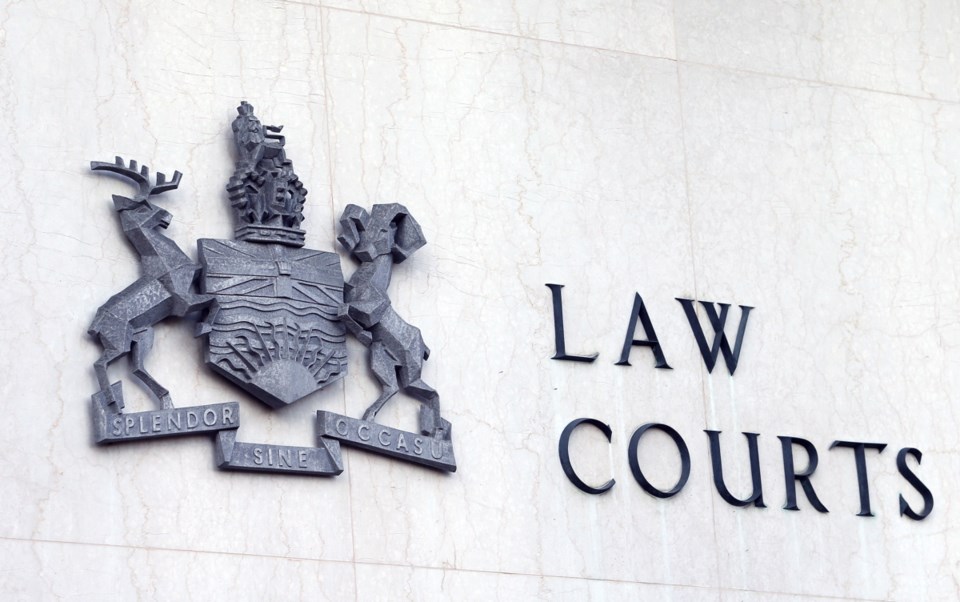The Crown urged a jury Thursday to convict a Montreal man of torching his Esquimalt house to get rid of a difficult tenant two years ago.
“It’s the Crown’s position that Wei Li intentionally set the fire at 318 Uganda Ave. and specifically to Billy Montgomery’s property in the garage,” Crown prosecutor Jess Patterson argued Thursday.
But defence lawyer Rolfe Horne told the jury the Crown’s theory that Li set fire to his rental property on the morning of Oct. 3, 2017, did not make sense.
“To suggest that his frustration with Billy Montgomery caused him to light his own dwelling on fire just doesn’t add up,” Horne said. “He made a down payment of $120,000 and there’s evidence from Mr. Li and police that the house would be an uninsured loss. So he’s burned up $120,000 and in all likelihood he will be sued by the bank.”
Li’s trial has heard from 20 witnesses since it began in B.C. Supreme Court Oct. 8. This morning, Justice Robin Baird will give the 12-member jury his final instructions. Jurors will then be sequestered to begin deliberations.
During final submissions, Patterson reminded the jury that Li searched the internet for information about gasoline, plastic bottles and safety the day before the fire. “We know he was present when the fire started and we know he was burned by the fire and he climbed out the kitchen window in the lower suite. We know he didn’t call 911 and went straight to the airport,” said Patterson.
The jury has heard about the difficult relationship between Li and Montgomery, who testified for the Crown.
Li testified about some of those challenges but painted a picture of a relationship in which he was doing everything right, never accepting any responsibility for the conflict, Patterson said.
The Crown’s theory is that Li used gasoline to light the fire, but gasoline vapours ignited and Li was badly burned.
He had already placed a log by the kitchen window so he could climb out and go straight to his car without being seen, said Patterson, adding Li’s behaviour after the fire supports an inference of guilt.
“He drives to the airport and gets through the screening, the metal detectors, without calling 911. He doesn’t tell anyone that as far as he knows, there’s still a fire at 318 Uganda Ave.”
Patterson reminded the jury that on Sept. 30, 2017, Li sent a text message to the person living in the other half of the duplex, saying someone threatened to burn the house down. “But he doesn’t report it to police, even though he had two dealings with them. He met with Const. Bruschetta on Oct. 2 and doesn’t say anything about a threat to burn the house down. He sent that text message as part of planning to put the blame on someone else.”
Li testified that he turned on a light switch and there was an explosion. While Li’s left hand had significant burns, there were no burn marks by the light switch, noted Patterson. “So how did his hand get burned?”
Li’s version of events is unbelievable, said the prosecutor. Li was trying to evict Montgomery but didn’t have a hearing with the Residential Tenancy Branch until Nov. 21. Li brought a gas can, kindling and a log into the house to get out the window, Patterson said.
“The only glitch in his getaway plan is that he burned himself.”
Horne pointed out, however, that while police seized Li’s clothing and running shoes at the hospital, they were not tested for accelerant. “That’s a significant oversight in forensic evidence,” Horne said. “More likely, the investigation came to a halt when police found the red gas can and kindling in the lower suite.”
Horne said burns on Li’s face are consistent with his evidence that after the explosion, he was disoriented and couldn’t figure out what to do.
The defence lawyer noted that the house had a number of electrical deficiencies that hadn’t been fixed.
There had also been a drug lab in the garage before Li took possession of the house.
The final defence witness, psychologist Peter Meuser — an expert on the impact of traumatic incidents — was asked by Horne to comment on Li’s behaviour after the fire. Meuser interviewed Li in September 2019 for five hours and conducted psychological tests.
Meuser testified that Li is fearful and believes others seek to harm him.
“He is very suspicious and mistrusting, which also impacts his current level of functioning,” Meuser said. “During the interview, he expressed a number of concerns that his life was in danger at the time of the [fire] and may still be.”
Whether he set the fire or not, Li’s failure to call 911 or seek immediate medical treatment, along with his decision to drive to the airport, is in keeping with someone who has experienced a critical incident, Meuser said.
The firefighter who assisted Li at the airport noted that he had first- and second-degree burns, was frightened and confused, and seemed to be in pain and shock.
The psychologist agreed with Patterson, however, that leaving to go to the airport and not calling 911 could also be consistent with guilt.



